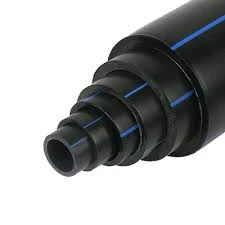Dec . 27, 2024 15:11 Back to list
ppr tube
Understanding PPR Tube A Comprehensive Guide
In the realm of plumbing and construction, materials play a crucial role in ensuring the functionality and longevity of structures. One such material that has gained significant popularity in recent years is Polypropylene Random Copolymer (PPR) tube. This article will delve into the characteristics, advantages, and applications of PPR tube, highlighting why it has become a favored choice among professionals.
What is PPR Tube?
PPR tubes are made from polypropylene random copolymer, a type of plastic that is known for its excellent thermal and chemical resistance. The unique molecular structure of PPR allows it to maintain its integrity under high temperatures and pressures, making it ideal for a wide range of applications. Unlike traditional materials such as metal and PVC, PPR offers several advantages in terms of performance and versatility.
Advantages of PPR Tube
1. Corrosion Resistance One of the standout features of PPR is its resistance to corrosion. This property makes PPR tubes an excellent choice for water supply and drainage systems, as they do not rust or degrade over time, ensuring a longer lifespan.
2. Thermal Insulation PPR tubes exhibit superior thermal insulation properties, minimizing heat loss in hot water systems. This characteristic not only enhances energy efficiency but also reduces the need for additional insulation materials, leading to cost savings in both installation and energy bills.
3. Lightweight and Easy to Handle PPR tubes are significantly lighter than their metal counterparts, which makes them easier to transport and install. This lightweight feature also reduces the structural load on buildings and simplifies the overall construction process.
ppr tube

4. Non-toxic and Safe PPR is a non-toxic material, which means it is safe for transporting drinking water. This quality is paramount in maintaining public health and safety, as it does not leach harmful chemicals into the water supply.
5. Easy Installation The installation of PPR tubes is straightforward due to their socket welding and fusion welding techniques. These methods provide strong and leak-proof joints, ensuring the integrity of the piping system.
6. Cost-effective Although the initial investment in PPR materials may be higher than some alternatives, the long-term benefits, including reduced maintenance costs and extended service life, make it a cost-effective choice for both residential and commercial applications.
Applications of PPR Tube
PPR tubes are used in various applications, including
- Hot and Cold Water Supply Because of its thermal resistance, PPR is ideal for both hot and cold water delivery systems. - Heating Systems PPR is commonly used in building heating systems, including underfloor heating and radiator connections. - Industrial Applications Due to its chemical resistance, PPR is suitable for transporting corrosive fluids in various industrial settings. - Agricultural Systems PPR tubes are utilized in irrigation systems, ensuring efficient water delivery in farming operations.
Conclusion
PPR tube has emerged as a reliable and versatile material for plumbing and construction projects, offering numerous advantages over traditional piping materials. Its corrosion resistance, thermal insulation, lightweight nature, non-toxic properties, and ease of installation make it an attractive option for a wide range of applications. As industries continue to innovate and prioritize sustainability, the demand for PPR tubes is expected to grow, further solidifying their place in modern construction and plumbing practices. Whether for residential or commercial use, PPR tubes stand out as a superior choice, ensuring safety and efficiency in water management systems.
-
Durable PP Rigid Sheet: Lightweight, Chemical Resistant Solutions
NewsAug.21,2025
-
PVC Grey Sheet for Extraction: Chemical Resistant & Durable
NewsAug.19,2025
-
Durable PVC Pipe Fittings for Plumbing & Irrigation Needs
NewsAug.18,2025
-
HDPE Steel Belt Reinforced Spiral Corrugated Pipe | High Strength
NewsAug.17,2025
-
HDPE Pipe Fittings: Durable, Leak-Proof Solutions
NewsAug.16,2025
-
Premium CPVC Sheet: High-Temp & Chemical Resistant Solutions
NewsAug.15,2025

